




Why Is Division Important in Everyday Life?
In general, kids begin to learn division in-depth in the third grade; however, in the first and second years, kids will be introduced to concepts that lead to long-form division and simple division using methods and games. Kids are expected to work with numbers far greater than those they can physically count as mathematical concepts become more complex. Understanding division will be easier when learned with real-life examples. Let's explore division for year 2 kids in this article.
What is the Definition of Division?
The division is a process of repeated subtraction. It is the inverse action of multiplication. It is considered the formation of equal groups. When we divide numbers, we split them down into smaller numbers so that the multiplication of those smaller numbers equals the larger number taken.
Daily Life Examples
1. Nirmal has 12 Sweets and he wants to share them equally between his three friends. Let's start by creating three groups then add one sweet at a time into each group until all twelve sweets have been shared equally. Let's count how many sweets are in each group to get an answer: Twelve sweets shared equally between friends is 4.
The division is denoted by a mathematical symbol that consists of a small horizontal line with a dot each above and below the line. There are two basic division symbols that represent the division of two numbers.
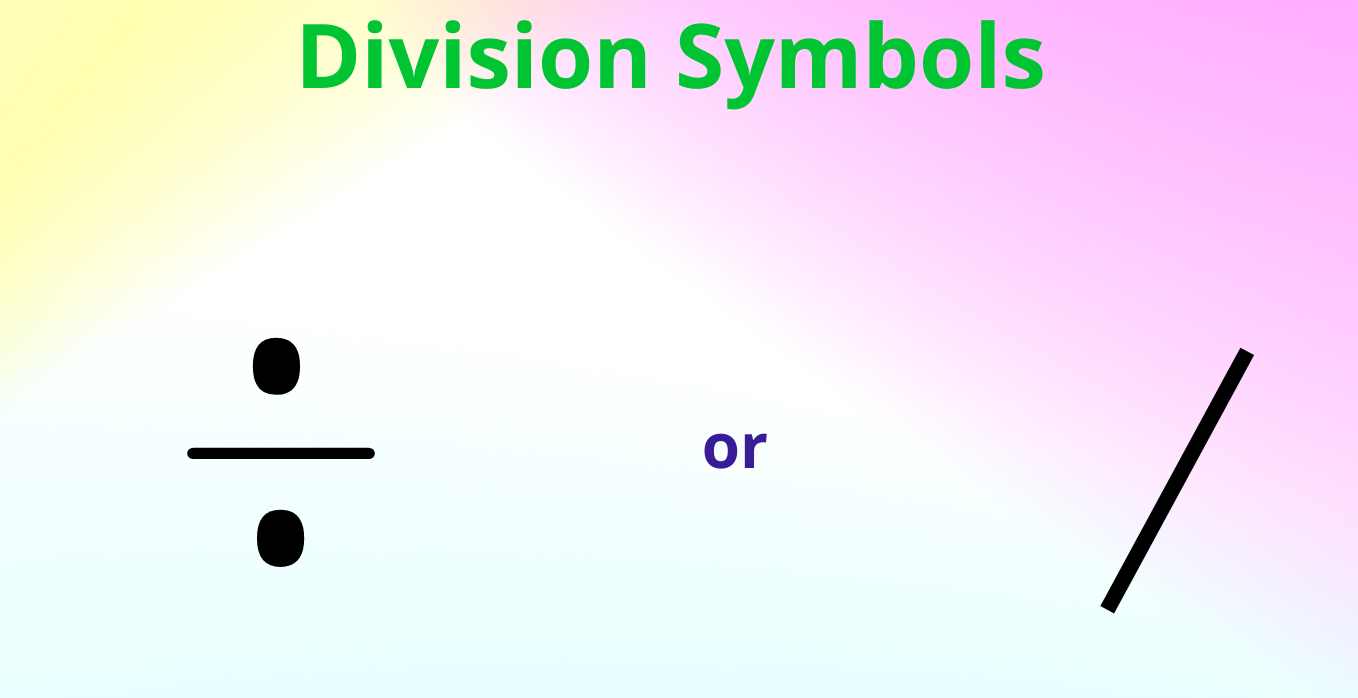
Symbols for Division
Other words for division are ‘share between’ and ‘divided’. Our solved example can be written as: 12 divided by 3 equals 4.

Image Shows the Division 12/3
2. Mahima has 16 apples and wants to divide them equally between her 4 friends. This can be written as 16 divided by 4.

Image Shows the Division 16/4
To find the answer we need to share 16 equally between 4 groups. Let's count how many apples are in each group to get our answer.
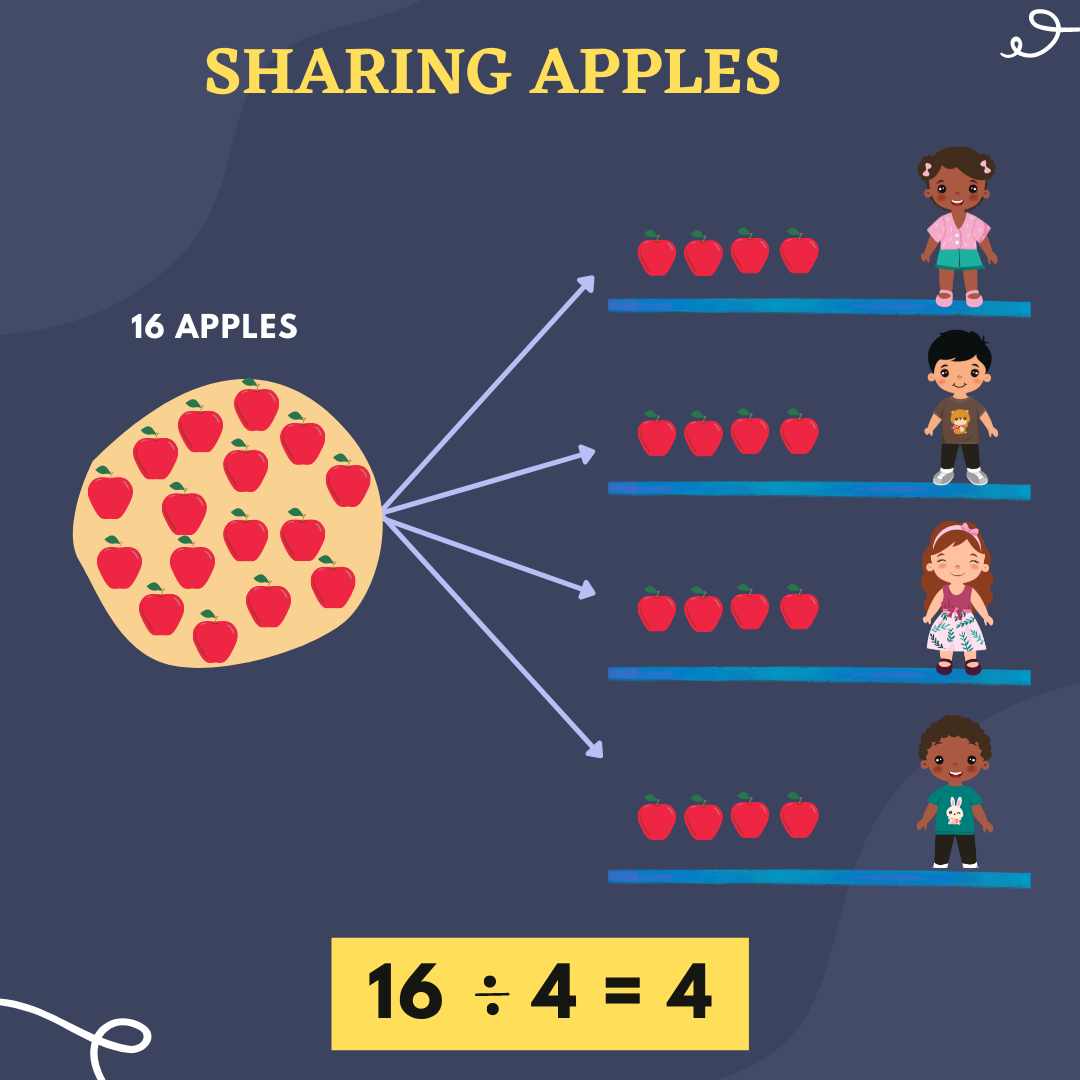
The Image Shows 16 Apples Shared Equally Among 4 People With the Division of 16/4
So, 16 apples shared equally between friends is 4.
3. We can divide by sharing objects into equal groups. So if we make the calculation, for 10 divided by 2, we can work out the answer by sharing ten objects equally into two groups.
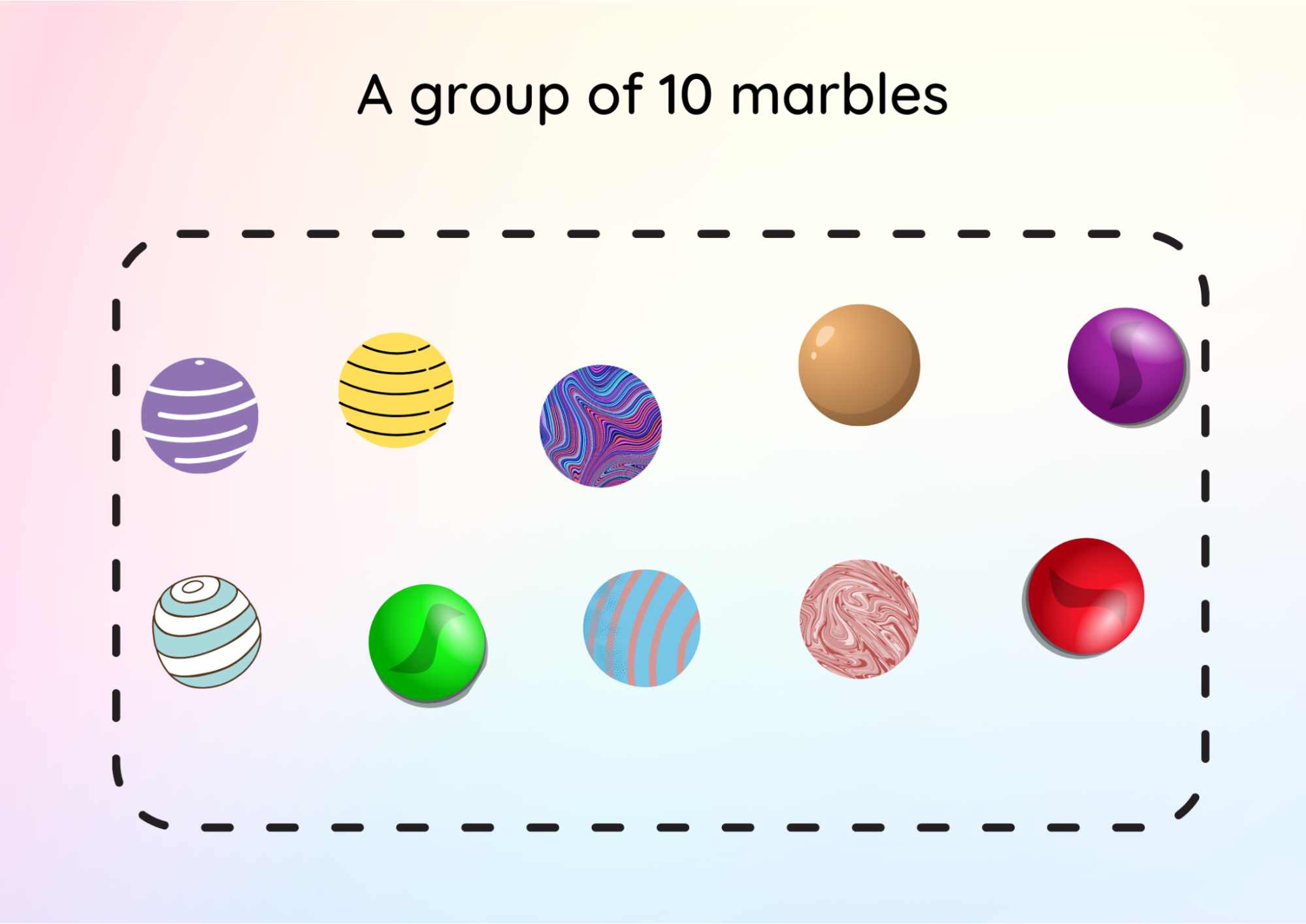
The Image Shows a Group of 10 Objects
There are five marbles in each of the two groups.
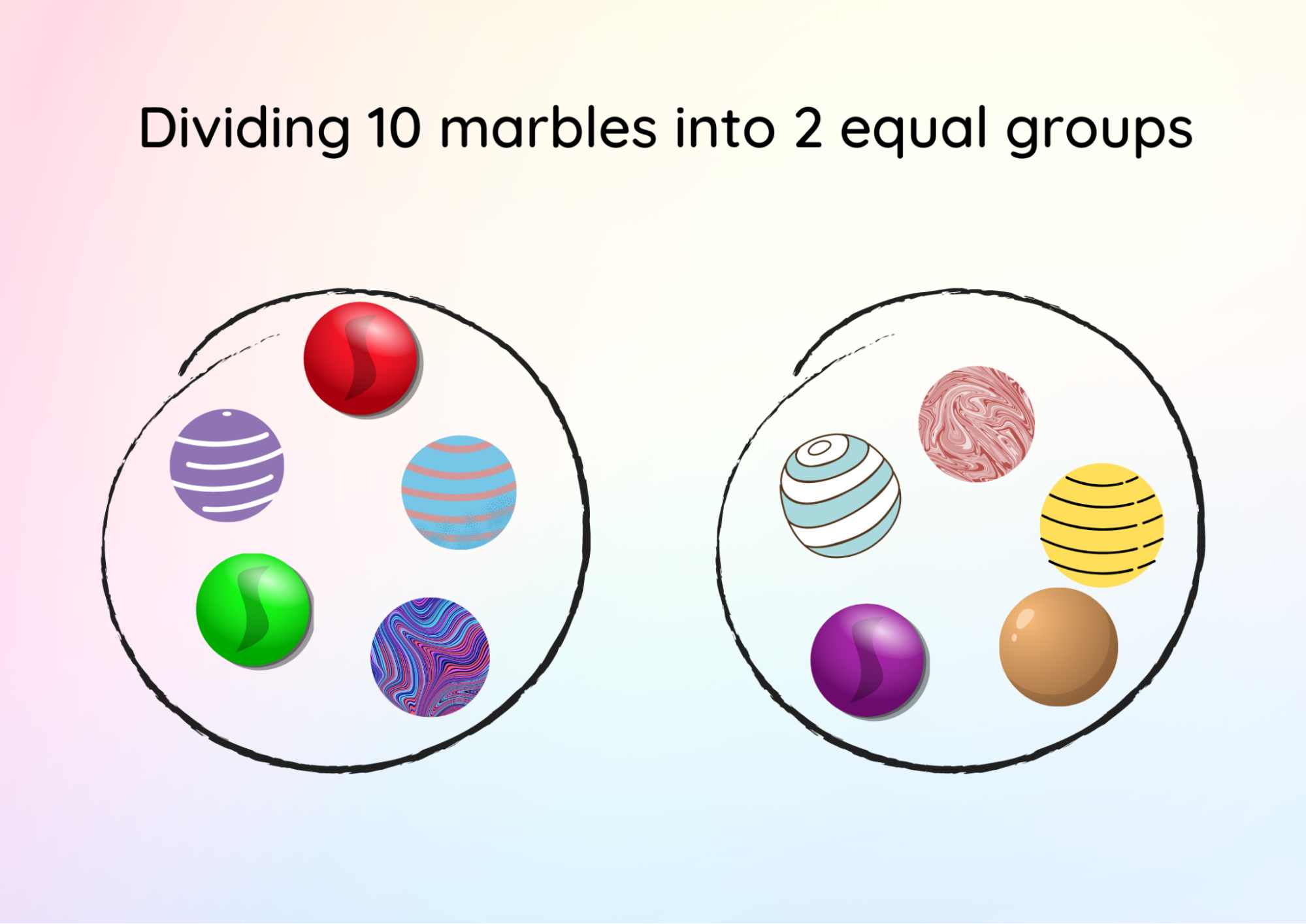
Image Shows 10 Objects Which are Equally Divided Into 2 Groups Each of 5 Objects
So, ten divided by two equals five.
Division by Grouping
Division by grouping looks at how many equal groups there are in a number. So if we take the calculation same as story example 3,
10 divided by 2.
We can look at this as how many groups of 2 there are in 10.
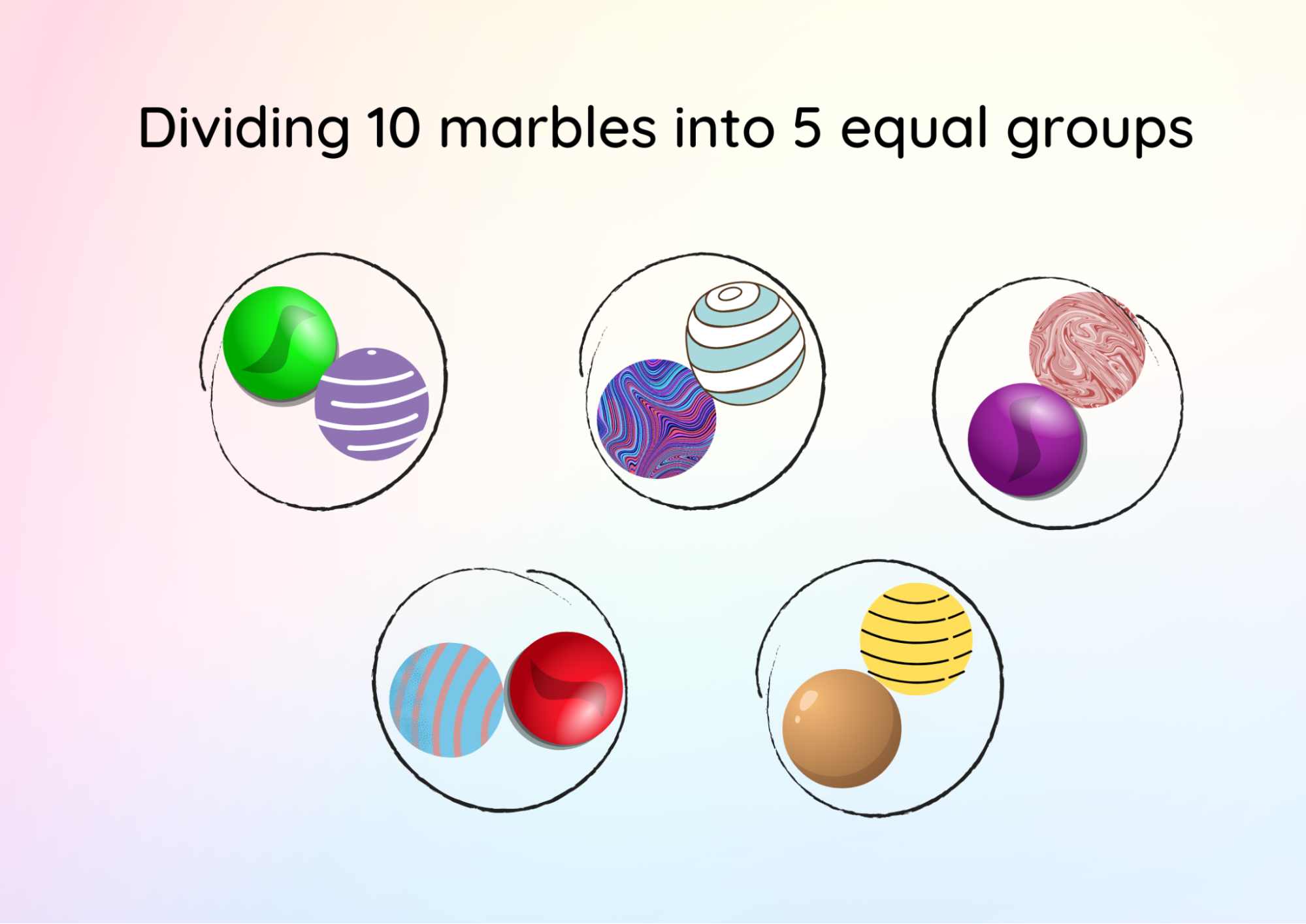
Image Shows 10 Objects Which are Equally Divided Into 5 Groups Each of 2 Objects
Equal groups of 2 in 10 are 5 (Refer to the image above). So 10 divided by 2 equals 5.
Important Terms in Division
The number to be divided in a division sum is referred to as the dividend.
The divisor is the number by which we divide.
The result of division is known as the quotient.
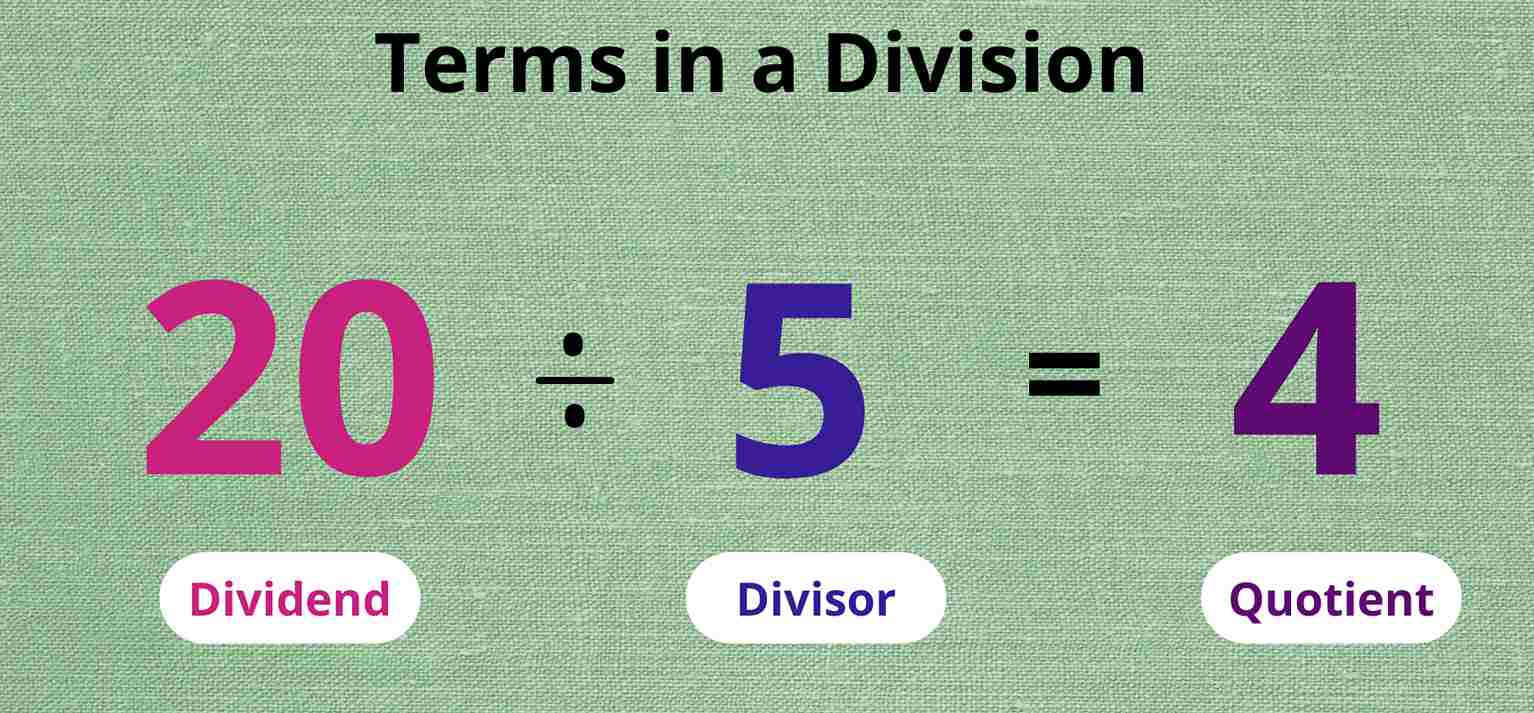
Image Shows the Terms of a Division with an Example
Multiplication and Division
The below picture shows 12 candies arranged in groups of 4.
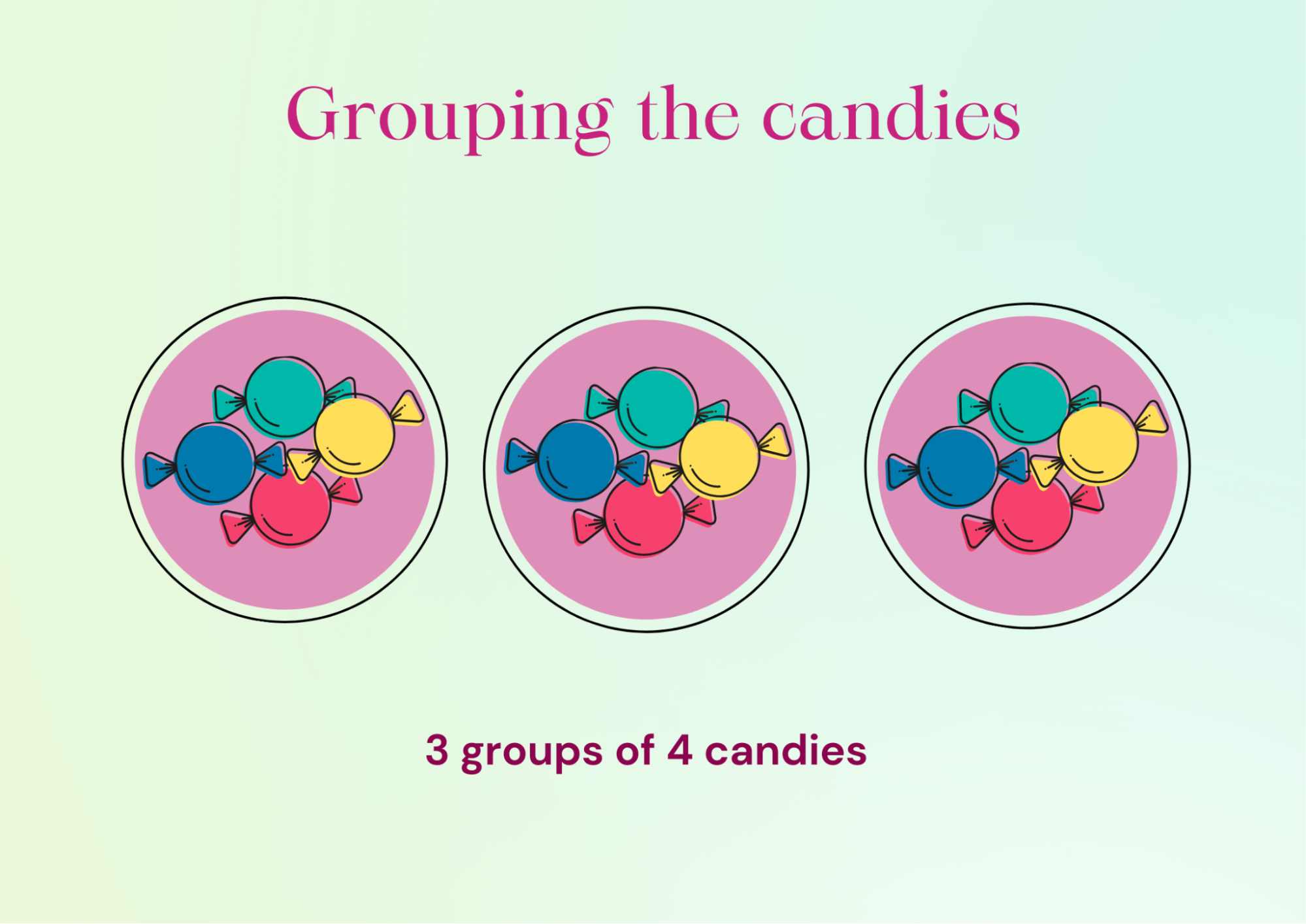
Image Shows Three Groups Each of Four Candies
If we observe, it shows a multiplication fact: 3 x 4 = 12 and also a division fact: 12 ÷ 4 = 3. 12 candies can be arranged in groups of 3 as well. It is shown below.
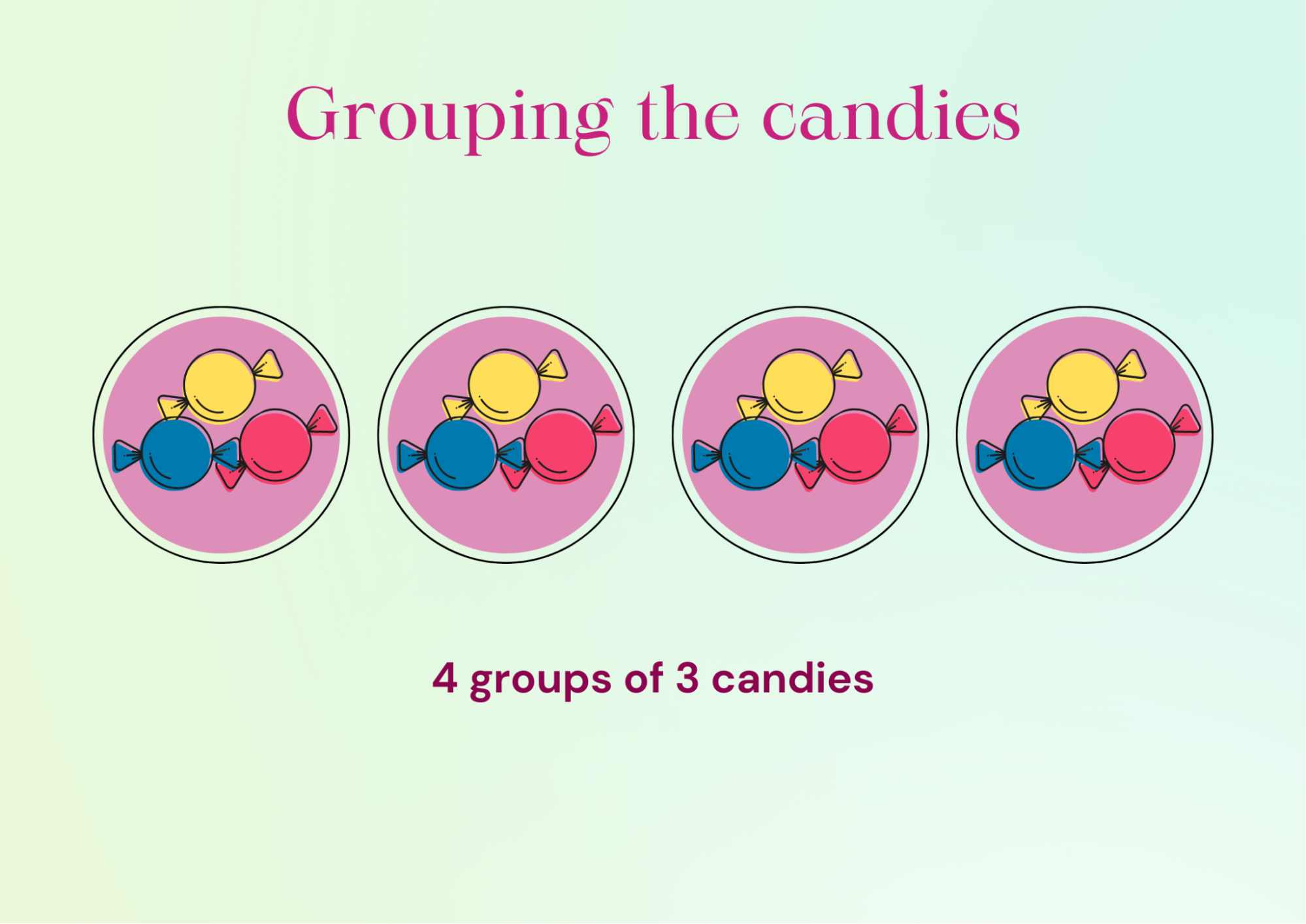
The Image Shows Four Groups Each of Three Candies
Here, we have a multiplication fact: 4 x 3 = 12 and a division fact: 12 ÷ 3 = 4.
Thus, we can observe that,
Multiplication of 3 x 4 = 12 gives us the division fact 12 ÷ 4 = 3.
Multiplication of 4 x 3 = 12 gives us the division fact 12 ÷ 3 = 4.
Helping Kids with Division at Home
Toys, some grapes, paper clips and buttons are all terrific practice items. Ask your child to count the number of objects, to begin with. Can they distribute the items equally between the two of you? Assist them in sharing objects between the two groups one at a time. When all of the objects have been divided, ask your child how many of each group there are. If you have the same number, explain that your child divided the objects equally among two groups, which is equal to dividing by two.
Conclusion
The division is the splitting of a large group into smaller groups so that each group has an equal number of things. In mathematics, it is an operation used for equal grouping and equal sharing. In this article, we have discussed the division process in maths in detail with some examples.
FAQs on Master Division for Grade 2: Real-Life Examples and Solutions
1. What are the main parts of a division sum for a Grade 2 student?
In a simple division problem, we have three main parts. Imagine you have 10 chocolates (the dividend) to share among 5 friends (the divisor). The number of chocolates each friend gets, which is 2, is called the quotient. So, the dividend is the total number of items, the divisor is the number of groups you are sharing into, and the quotient is the answer.
2. Can you give some simple examples of division from our daily life?
Yes, we use division all the time! Here are a few examples perfect for Grade 2:
Sharing Food: If you have 8 slices of pizza and want to share them equally among 4 family members, you use division to find out that each person gets 2 slices (8 ÷ 4 = 2).
Arranging Toys: If you have 12 toy cars and 3 boxes, you can divide them to put 4 cars in each box (12 ÷ 3 = 4).
Giving Out Party Favours: If you have 15 stickers to give to 5 friends at your party, each friend will get 3 stickers (15 ÷ 5 = 3).
3. How do we know when to use division in a story problem?
You should think about using division when a story problem asks you to do things like share something equally, split items into equal groups, or find out how many items are in 'each' group. Look for keywords like 'share', 'distribute equally', 'split', or 'how many each'. For example, if a problem says, “Ria has 20 pencils and wants to put them into 4 pencil stands equally. How many pencils will be in each stand?”, the words 'equally' and 'each' are clues to divide.
4. What is the relationship between division and multiplication?
Division and multiplication are opposites, like a pair of best friends who do things in reverse! If you know a multiplication fact, you also know a division fact. For example, if you know that 4 x 5 = 20, you can also say that 20 ÷ 5 = 4 or 20 ÷ 4 = 5. This is a great way to check your division answers.
5. Why is division sometimes explained as repeated subtraction?
Division can be understood as repeated subtraction because you are taking away equal groups over and over again. For instance, to solve 12 ÷ 3, you can start with 12 and keep subtracting 3 until you reach 0. You would do: 12 - 3 = 9, then 9 - 3 = 6, then 6 - 3 = 3, and finally 3 - 3 = 0. Since you subtracted '3' a total of four times, the answer to 12 ÷ 3 is 4.
6. How can I check if my answer to a division problem is correct?
The best way to check your division answer is to use multiplication. You can multiply your answer (the quotient) by the number you divided by (the divisor). If the result is the number you started with (the dividend), your answer is correct! For example, if you solved 18 ÷ 2 = 9, you can check it by multiplying 9 x 2. Since 9 x 2 = 18, your answer is right.
7. What happens in division when we cannot share things into perfectly equal groups?
That's a great question! Sometimes, after sharing things equally, you might have some items left over. This leftover part is called the remainder. For example, if you have 7 cookies to share between 2 friends, each friend gets 3 cookies (a total of 6), and there will be 1 cookie left over. That '1' is the remainder. For Grade 2, we are just beginning to see how this works!















